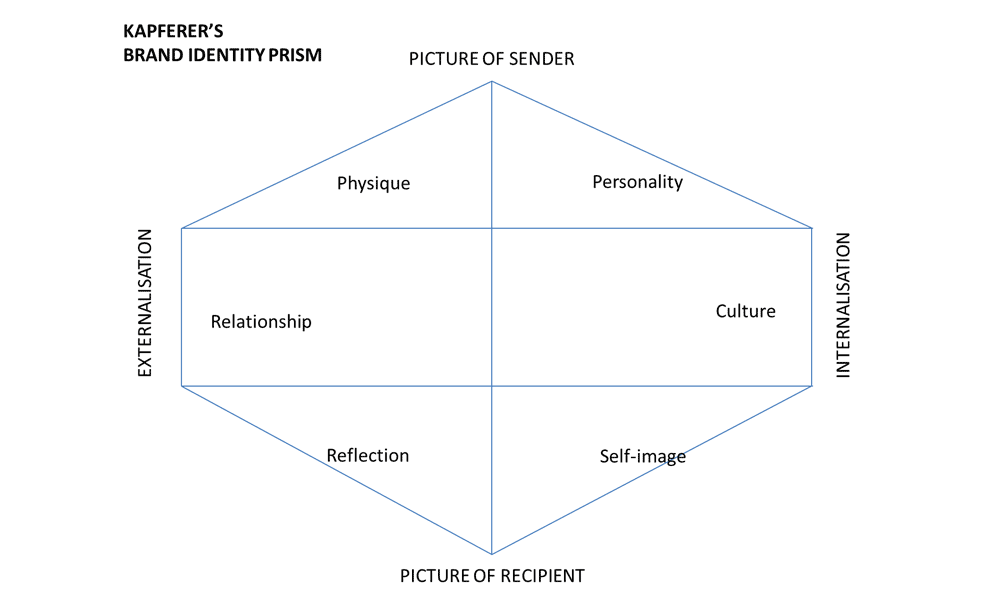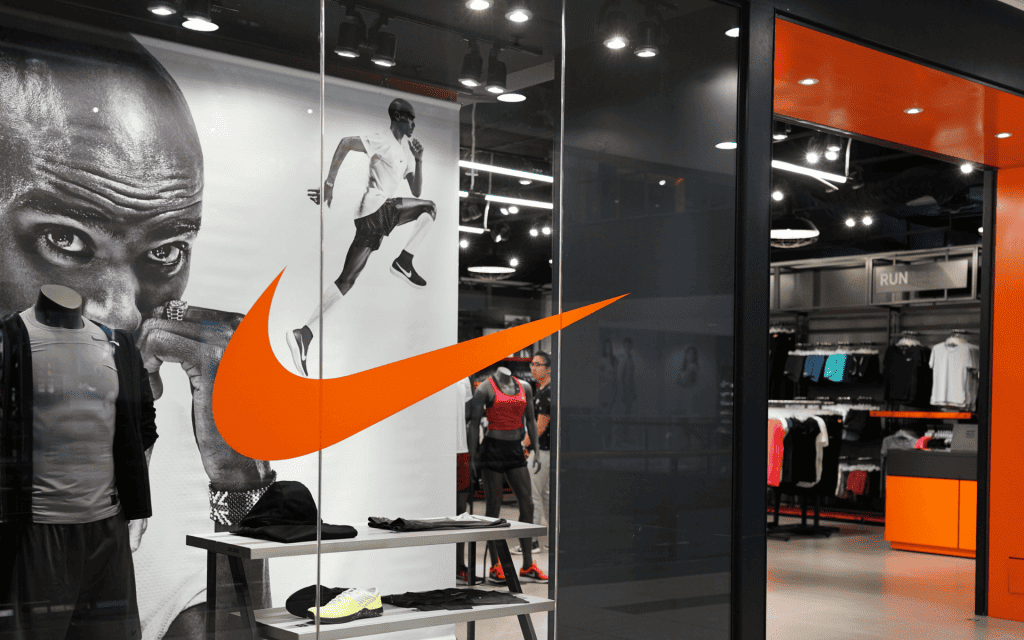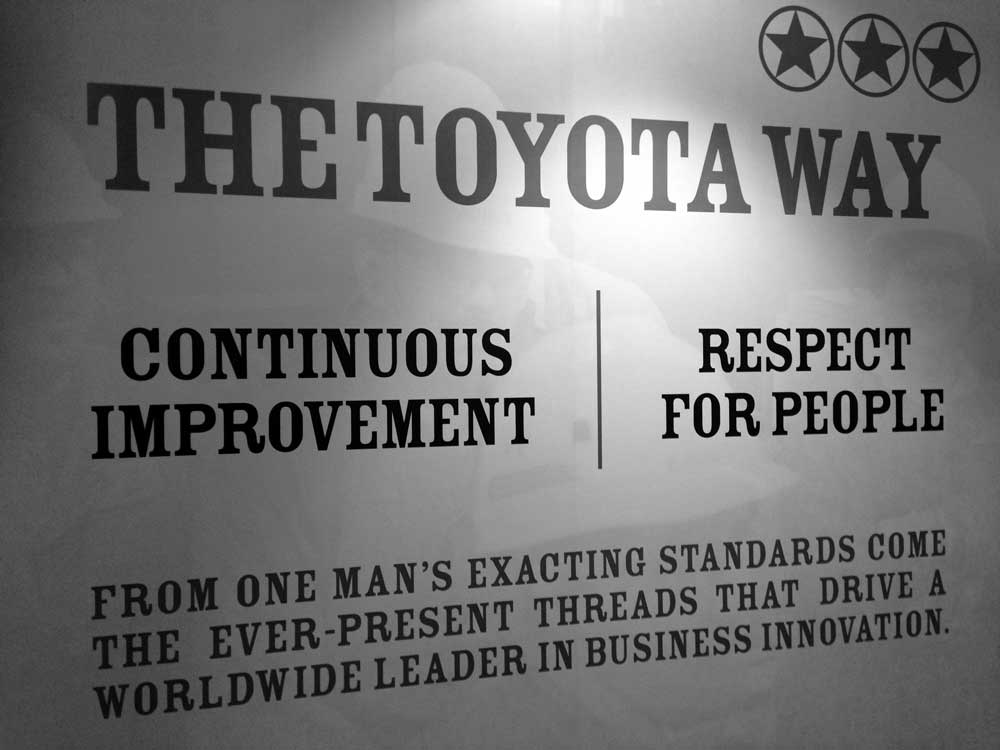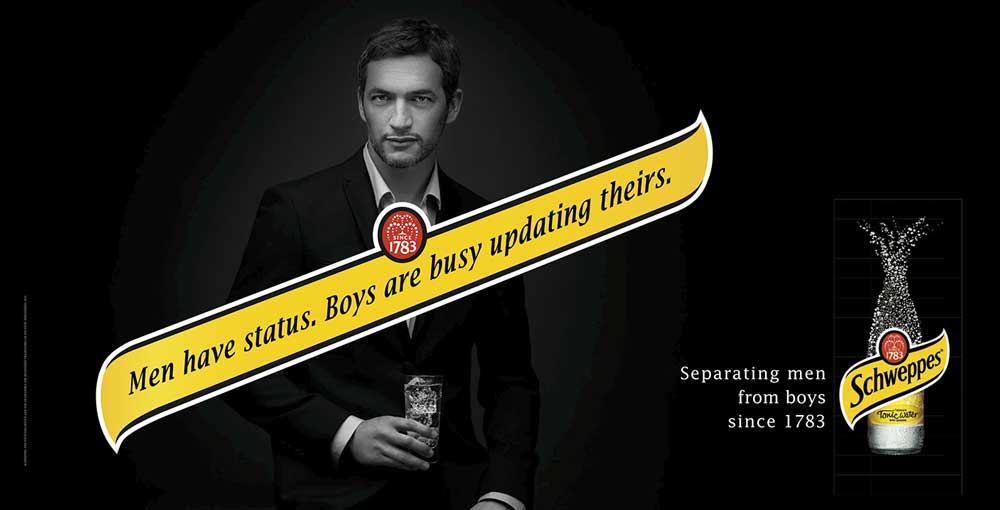What is Kapferer's Brand Identity Prism?
In today's modern business landscape, having a robust and recognisable brand identity is essential for distinguishing yourself from the competition and, more importantly, reaching out to your target audience on a subtle, subconscious level. However, a brand identity is more than just a pretty logo and some catchy slogans. It is a strategy that encapsulates everything from the company's core values to the tone of voice used in communication and everything in between.
Namely, by crafting your brand identity in a certain way and using particular elements such as the logo design, tagline, tone, and colours, you are trying to communicate a set of values your name represents to your audience. These visual elements undoubtedly reflect some fuzzy concepts, helping people grasp the essence of your brand and relate to it. But here's the kicker – a company's brand identity differs from its image.
You may ask, “What's the difference?” The two differ in that brand identity is how you want your audience to perceive your company, product, or brand, while the brand image is how they view it. Simply put, your brand identity is the image you want to portray, while the brand image is people's perception of it. It is imperative to note that a brand identity is, in a way, ‘active', meaning it can be projected. Its efficacy can be measured, allowing for changes and fine-tuning of strategies to yield improved results.
As this entire process is complicated and multi-layered, knowing and understanding the critical elements of a brand is a must to build a successful brand identity. Kapferer's Brand Identity Prism is an excellent tool that dissects brand identity and explains its elements in detail, emphasising how each piece shapes the audience's brand perception. So, you want to create a compelling brand identity. In that case, it's time to craft a clear message that speaks to your target audience, emphasises your values and unique selling points, and crafts visual language that consistently and persuasively articulates your brand promise.
Table of Contents
Kapferer's Brand Identity Prism Overview

A magnetic brand identity is critical to capturing your customers' attention and staying ahead of the game. Said identity is a carefully crafted strategy encompassing any visual, audible or even olfactory cues associated with your brand or product. In 1986, Jean-Noel Kapferer – a professor of marketing strategy at HEC Paris – came up with the marvellous idea of representing brand identity as a hexagonal prism, with each side standing for one of the six essential elements of a brand. These include:
- Physique,
- Personality,
- Culture,
- Relationship,
- Self-image
- Reflection
– all pivotal to establishing and maintaining a brand's essence.
Successful brands know how to project a positive and coherent image into the minds of their consumers. This means that each of the six facets of a brand identity needs to be carefully intertwined, aligned and reinforced to create a consistent, long-lasting impression. The goal is to strengthen the brand, make it more recognisable and memorable in the minds of your consumers, and ultimately drive revenue through loyal customers.
A compelling brand identity also leads to a positive brand image. Perceived quality, in this case, is the name of the game. Building customer trust and loyalty is only possible with a positive brand image. Fostering customer loyalty is, in fact, pivotal in growing your business. As Jean-Noel Kapferer suggests, “A strong brand is not just a guarantee of success in itself; it also makes it possible to build on this success by expanding products, markets, and emotions.”
Let us remember the ultimate goal of any business endeavour – making money. Since your branding, marketing, and sales efforts all translate into profits, it is worth noting that 80% of any company's future revenue will come from just 20% of its existing customers. To keep your brand afloat, your aim should be to entice and maintain loyal customers, nailing down those critical six facets of brand identity at every step. The payoff is a robust and resilient brand identity that drives loyalty, repeat business, and success.
1 – Physique

The first facet of the brand identity prism plays a pivotal role in establishing your brand's emotional and visual embodiment. Through physical features, it provides a tangible representation of everything abstract that your brand stands for. The physique element should ultimately be considered the visible heart of your brand. Its function is to shape and outline how the ideas and values behind your name will be visually incarnated, echoing your unique selling points and reflecting your core values effectively.
Through skilful and artful communication, a brand's physique can evoke emotions with just one glance. Its visual language can communicate reliability, elegance, and style. For instance, the famed iPhone; its appearance conjures up many associations, including its impressive aesthetics, charming design, and superior quality. These elements contribute to Apple's brand identity, serving as the bedrock of its enduring success.

While the physique element of a brand can quickly become synonymous with its products, it can sometimes be complicated. Some brands have differentiated themselves from their competitors, keeping their unique visual identity at the forefront of their brand image. Consider Nike; it goes to great lengths to keep its famous checkmark, or “swoosh,” at the heart of its branding. The company hopes that seeing that swoosh will evoke feelings of style, reliability, and athletics – values at the core of its brand.
In essence, the physique element of your brand serves as an essential embodiment of your brand's core values. It is the visual trigger to an unforgettably positive customer experience, influencing loyalty and ultimately driving revenue. Through meticulous attention to detail and consistent visual communication, the physique element can make an indelible impression on your audience, giving them a window into what makes your brand unique.
2 – Personality

The second facet of brand identity, personality, is a term that calls to mind the human attributes and features that make up the character of your brand. It delves deeper into the essence of your brand beyond its physical appearance. Imagine your brand as a real-life person – what clothes do they wear? What are their interests? Are they sarcastic, funny, or serious? The answers to these questions, seemingly trivial as they are, are critical in identifying your brand's individuality and the target audience who will relate to it.
Consider the difference in personality between the luxury brand Jaguar and the adventurous Jeep. While Jaguar boasts an image of high-end, luxurious vehicles, Jeep is rugged and sturdy, famous for its four-wheel drive and prowess in the great outdoors. These characteristics form the basis of the brands' messaging, allowing each to appeal to a distinct customer base.

The success of these two brands might be attributed to their ability to deliver on their promises. Customers know that when they buy a Jaguar, they will receive a smooth and luxurious ride, while those who crave adventure can rely on Jeep to deliver it. Furthermore, some brands take it further by endorsing their products with celebrity endorsers. These people help the brand create an interpersonal connection, lending their personalities to the products or services.
It is through colours, tone, style of writing, and attitude that a company can communicate its brand personality. Coca-Cola is one such brand that famously leverages its iconic typeface and deep red colour to express happiness and joy, the emotions the brand exemplifies.
Ultimately, the brand personality is crucial in building an emotional connection with the audience. With a consistent and intriguing brand personality, customers will know what to expect from a brand, reinforcing the emotional reaction that they will have and strengthening brand loyalty.
3 – Culture

Culture, the third facet of the brand identity prism, reflects the cultural and societal values of a brand's country of origin. This crucial aspect of brand identity allows brands like Opel, Mercedes-Benz, and BMW to create prestige and reliability based on German engineering, punctuality, and precision. By tapping into the values integral to their target audience, they build an emotional connection that inspires customer loyalty.
The Japanese car giant Toyota relies heavily on cultural values to establish its brand's identity. In 2001, Toyota launched the Toyota Way, grounded in traditional Japanese artistic and philosophical values. Among these values were the ideas of “kaizen” (continuous improvement) and “jidoka” (automation with a human touch), both of which reflect the hard-working ethos of the Japanese people. This move allowed Toyota to embody a sense of excellence and quality reflective of the Japanese cultural identity, ultimately appealing to a global audience.

Interestingly, some brands have leveraged their image as being from another country to build an emotional connection with their audience. This is the case with the iconic American brand Mars, which has capitalised on the perception that it originated in the Netherlands. The brand has tried to adapt its culture to Dutch values, creating a unique and compelling brand identity that resonates with Dutch consumers.
In conclusion, culture plays a crucial role in establishing brand identity, reflecting the values and beliefs of a brand's country of origin. By tapping into core values, brands build an emotional connection with their audience, driving home the importance of cultural values in shaping a brand's identity.
4 – Relationship

The fourth dimension of brand identity is undoubtedly the most crucial as it builds upon the concepts previously discussed, creating a relationship between the brand and its customers. The relationship between a brand and its consumer can take many forms, from friendly and pleasant to professional and detached. However, deciding what human trait will define the relationship you wish to have with your audience is essential, as this will shape the interaction between the brand and its consumers.
One brand that has masterfully crafted a unique relationship with its customers is Apple. With a loyal and devoted following, Apple has established itself as a brand champion in building long-term and meaningful customer relationships. Apple's approach to relationship-building is simple yet effective; they place their customers on a pedestal, making them feel like they are part of an elite club with a fanatic following. The strategy and outstanding customer service have garnered the brand a sterling reputation, making their products ‘to die for'.
While it is essential to cultivate external relationships to drive brand identity, it is equally important to nurture the relationship between the elements that impact the brand internally. The internal connection between the company and its employees defines how the brand unfolds in the marketplace. A company with a clear vision and mission statement, conscientious marketing strategies, and a healthy work environment will likely establish a strong customer relationship. The impression of a well-organised brand will inevitably translate into better performance and higher customer satisfaction.
Businesses today operate in a dynamic environment where brand identity is everything. Companies must form relationships with their customers, pay attention to their specific needs, and create an image that reflects the values of their intended audience. An effective brand relationship will drive customer loyalty, recognition, and positive business results.
5 – Self-Image

The fifth dimension of brand identity, self-image, examines how consumers see themselves within the context of a particular brand. Incorporating self-image into a brand identity is essential to attract and retain customers, as people tend to buy products that reflect their desired self-image. Therefore, companies must target their audience and tailor their brand accordingly carefully.
Brands can exploit the concept of self-image by using a psychological mechanism in which customers buy products to become the best version of themselves. Companies leverage this mechanism by playing specific cards, such as sex appeal, confidence, classiness, or elegance, to convince their customers that buying their brand will make them sexy, confident, classy, or elegant.
For example, Schweppes's famous soft drink brand targets a more mature audience with its distinct, bitter taste. The brand reflects its customers' image of themselves as active and independent individuals who know what they want. Schweppes' catchphrase, “Separates men from the boys and women from the girls,” seeks to tap into a mature audience's need for sophistication and class, reinforcing their self-image.
Incorporating self-image into the brand identity can cement customer loyalty by portraying the brand as a conduit for positive self-image transformation. By doing so, brands deepen their emotional connection with their customers, leading to better business performance.
In conclusion, incorporating self-image into a brand identity is a winning strategy for attracting and retaining customers. By targeting audiences with precision and playing on psychological mechanisms, brands can convince customers that using their product will provide the best version of themselves. By targeting mature audiences with its bitter taste and catchphrase, Schweppes showcases how an effective self-image identity can lead to cemented customer loyalty and better business performance.
6 – Reflection

The sixth dimension of brand identity considers the subtle yet substantial difference between self-image and reflection. While the former centres on the idea of self that a customer associates with a particular brand, the latter refers to how the brand perceives its audience. Reflection acts as a set of stereotypical notions of a brand's customer base, used for promotional purposes and highlighted in ads and commercials. In contrast, self-image flips the customer's reflection on its head, representing the customer's ideal self.
Reflecting on the customer means looking at the target audience and how they perceive your brand. It answers the question, “What does the typical buyer look like?” Self-image, however, is more profound, as it addresses customers' emotional needs and desires. This customer-centric approach allows brands to create an emotional connection with customers that reflects their ideal selves.
For example, research suggests that a typical Porsche customer is an affluent male who feels and acts arrogant and snobbishly. They want to display their status by driving an expensive car like a Porsche. Reflecting upon these findings, Porsche's marketing efforts are primarily directed towards this affluent and snobbish demographic using marketing messages tailored to this income group.
By mastering these six elements of brand identity, companies can position their brand accurately, build equity, acquire new customers, and retain existing ones. Reflection and self-image are crucial dimensions influencing customer behaviour and creating a lasting relationship between the brand and its audience. A deep understanding of these concepts is essential for companies to communicate their message accurately, build brand awareness, and, ultimately, drive business performance.
How to use the Brand Identity Prism

The Brand Identity Prism is a magical prism that works wonders when you chart your brand through each facet. As you move through the prism, you must ask yourself increasingly complex questions, such as my true mission statement. Whom would I pick to represent my brand if I could go beyond the limits of reality? What specific impressions do I want people to leave my store with?
The Brand Identity Prism provides brands with a holistic approach to branding that offers a comprehensive view of the brand in six dimensions. When creating your personalised Brand Identity Prism, remember that your primary goal is consistency in your persona. Accordingly, your answers should reinforce each other and create an immersive, all-encompassing brand experience.
As you move through the facets of the prism, you begin to see your brand through an entirely new lens. By answering the questions posed by each dimension, you create a comprehensive, multidimensional view of your brand. The six dimensions of the prism, when employed in harmony, allow for a complete encapsulation of the brand:
- Physique: What does your brand look and feel like?
- Personality: Who is your brand's character, and how does it differentiate itself?
- Culture: What values and beliefs does your brand unite? Is it environmentally or socially conscious?
- Relationship: How do customers interact with your brand, and how do they perceive it?
- Reflection: How does your brand reflect your customers, and how do you reflect their desires and ideals?
- Self-image: How does your brand serve customers' emotional needs and wants?
Once you've created a personalised Brand Identity Prism, consider summarising your brand into a unifying concept. This concise description should capture who you are as a business, your mission statement, and the impression you want to leave on your customers.
Remember to keep your prism handy as a reference to guide everything from daily communications to monumental decisions. As your business evolves, revisit and update the prism regularly to ensure it remains relevant to changes in your business goals. In conclusion, the Brand Identity Prism provides brands with an innovative, multidimensional approach to branding that can help them distinguish themselves in a crowded marketplace.
Wrapping Up
Kapferer's Brand Identity Prism is a powerful tool that enables brands to build a comprehensive, multidimensional view of themselves. Businesses can create a fully-realised picture of their brand's identity by considering and answering the questions posed by each prism's six dimensions. This approach engenders consistency, inspiring brand recall and loyalty.
Whether you are a small startup, an established company, or a personal brand, Kapferer's Brand Identity Prism can be a valuable tool for creating a powerful brand identity that communicates who you are, what you stand for, and why you matter. Remember the prism's facets and let them inform your branding decisions. With Kapferer's Brand Identity Prism, you can create an authentic, consistent, and compelling brand identity that resonates with your customers and stands the test of time.
